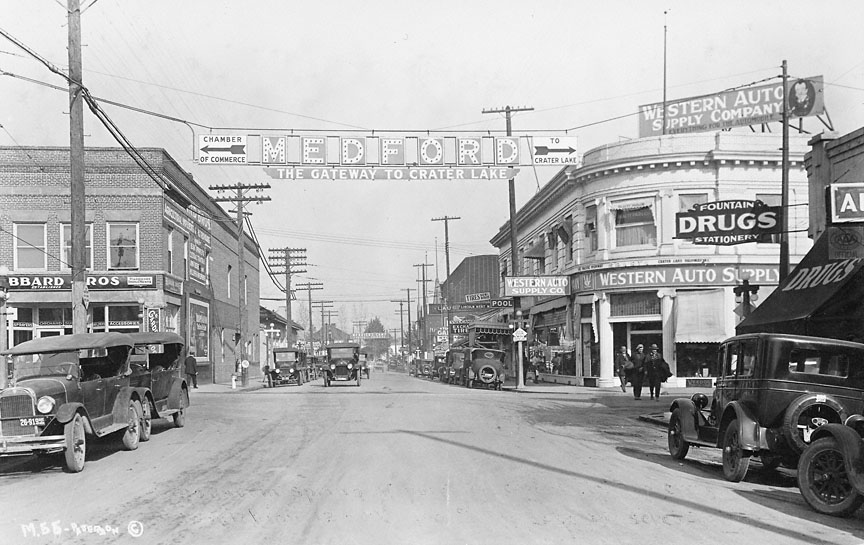- Catalog No. —
- OrHi 69059
- Date —
- 1926
- Era —
- 1881-1920 (Industrialization and Progressive Reform)
- Themes —
- Geography and Places, Sports and Recreation, Transportation and Communication
- Credits —
- Oregon Historical Society
- Regions —
- Southwest
- Author —
- Frank Patterson
Medford, Gateway to Crater Lake
Prior to the 1910s, most travelers to Crater Lake went by horse-drawn wagon, taking a full three days to cover the eighty-five miles from Medford. That began to change in 1906, when the first automobile successfully made its way to the newly formed national park.
In the 1910s, the National Park Service, eager to attract as many visitors to the nation’s parks as possible, began to actively lobby for improvements to the roads leading to Crater Lake. The Park Service envisioned the development of a massive tourist circuit that would cover all the major parks of the American West. The road from Medford to Crater Lake, which started off as a rough trail in the late nineteenth century, was paved in the early 1920s, easing automobile access to the park.
The Park Service also made a sustained effort to improve roads within the park during this period, completing the road around the lake’s rim and several other construction projects in the late 1910s. The Park Service’s efforts to increase visitation clearly paid off. In 1931, the park drew a whopping 170,000 visitors, up from fewer than 29,000 ten years earlier.
By the 1920s, Medford was billing itself as the “Gateway to Crater Lake.” The photo reproduced here, taken by postcard photographer Frank Patterson in the mid-1920s, shows the Pacific Highway as it passes through Medford’s business district. The starting point of most visitors to Crater Lake, Medford greatly benefited from the tens of thousands of tourists who came every year to see one of North America’s most unique geological features.
Further Reading:
Harmon, Rick. Crater Lake National Park: A History. Corvallis, Oreg., 2002.
Greene, Linda. Crater Lake National Park, Oregon, Historic Resource Study. Denver, Colo., 1984.
Written by Cain Allen, © Oregon Historical Society, 2003.
